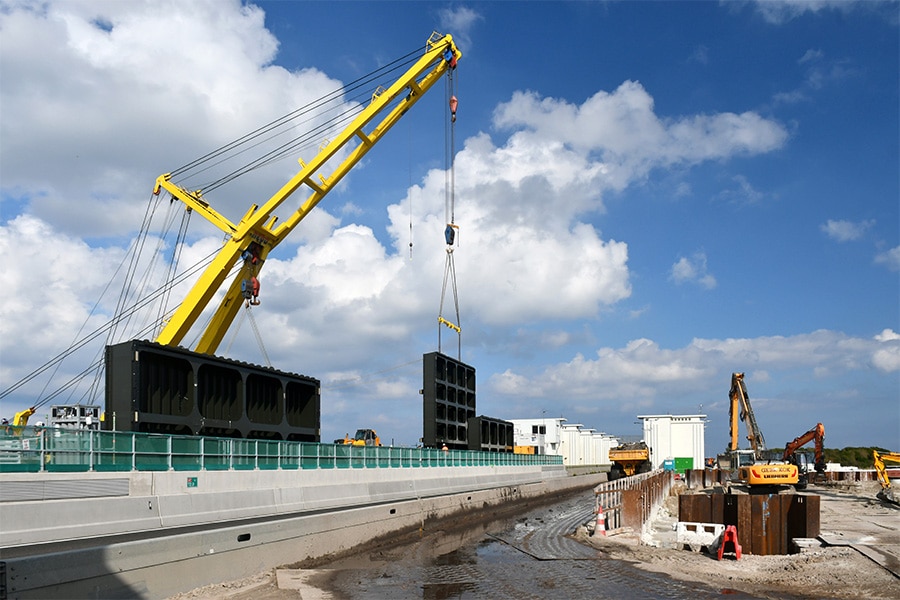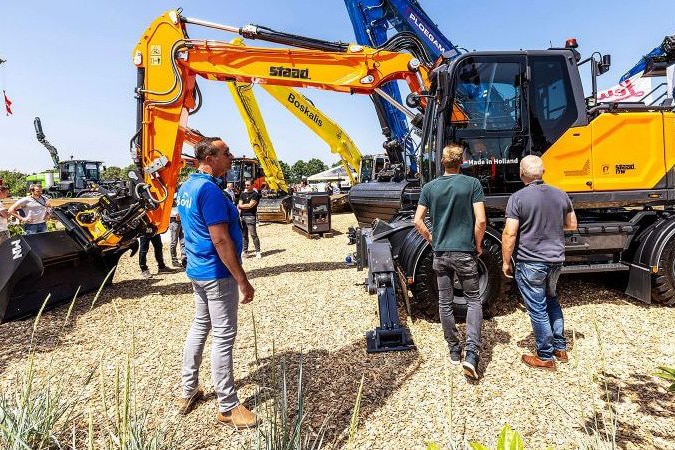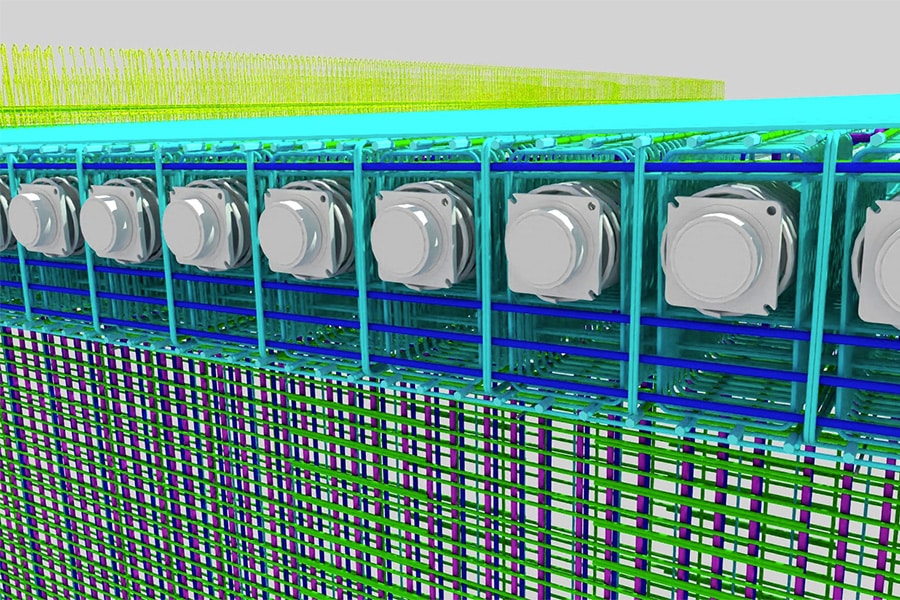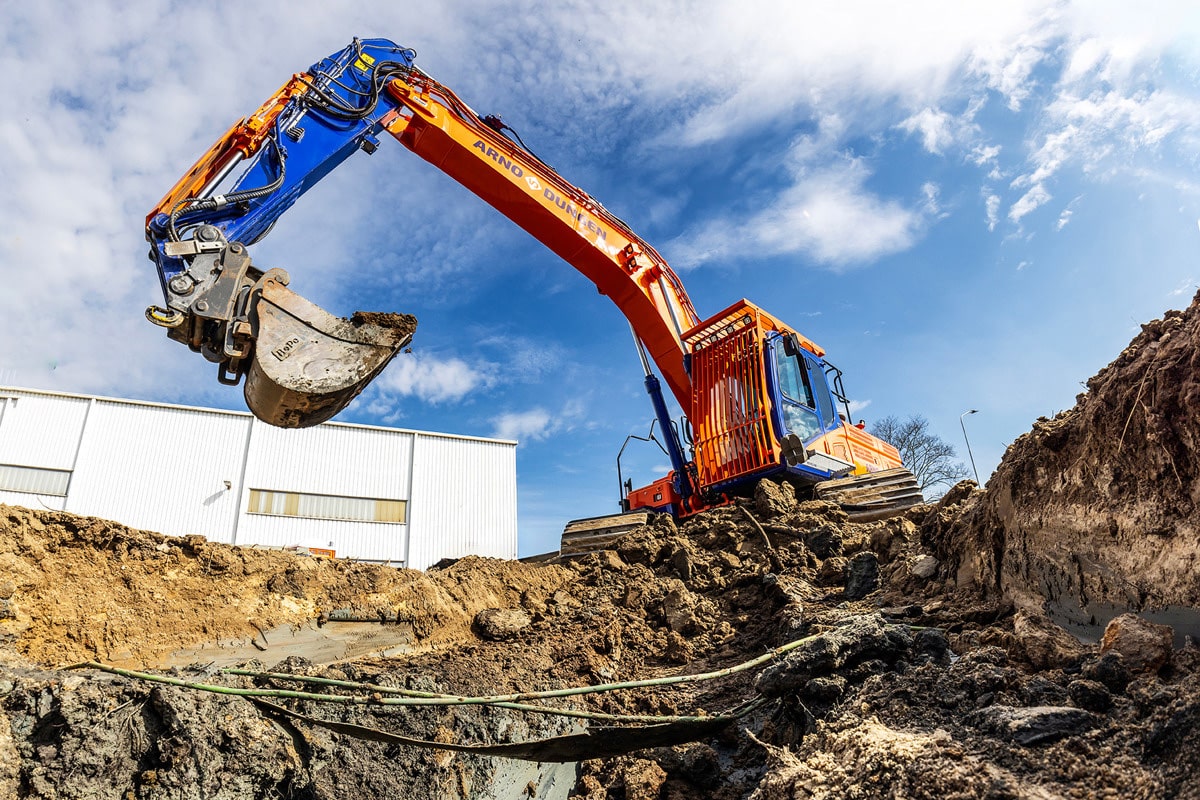
Good workflow evident in multidisciplinary construction group
Maurice van Dorst, project manager at Denys Engineering & Contracting, part of the multidisciplinary Denys Group, also knows that.
"As a contractor specializing in underground infrastructure -pipes for gas, water, energy, district heating but also mobility and other construction techniques- you work with many disciplines in a chain. To optimize that, two things are very important." Van Dorst mentions, "The equipment must always work and a good workflow ensures smooth cooperation within the complementary disciplines in the chain."

Reliable and accurate equipment
Denys uses reliable and accurate surveying equipment. "We work with the complete roverset from Topcon, consisting of the HiPer VR (GNSS receiver), a field book FC-6000 and MAGNET Field software." Barry Engelen Account Manager Geomatics at Topcon Positioning Netherlands explains why this roverset is so reliable. "Our GNSS solutions are purpose-built to avoid downtime. The HiPer VR has a compact and robust design and is equipped with the most advanced technology, enabling it to do its job under the toughest conditions. Thanks to Universal Tracking Channels technology, the HiPer VR is always in communication with all satellites." Van Dorst agrees: "No matter the weather conditions, no matter the location, next to a tree or in the middle of nowhere, we always have coverage. It saves an enormous amount of time that you don't have to do extra steps or set up Total Station multiple times each time. Combine that with the powerful field book with the easy-to-use Fields software and you're so much more carefree, efficient and fun to work with."

Good design for optimal collaboration
In addition to good tools, good design is also crucial to a good workflow. "When all disciplines as links within the entire construction process work with accurate and up-to-date information, the work is done faster, more accurately and more efficiently." Van Dorst: "Based on a design line from the client, we perform a Klic request and check intersecting cables and pipes. In doing so, we make a trial trench plan. By measuring and plotting using GPS, we incorporate the data in the construction design. With the elaborated Klic data in the design, excavation damage is prevented, which is important for the safety of the people working there and the environment." After the pipes are out, the welding crew gets to work first, which is followed by the excavation crew. "The excavation work is done accurately using Topcon equipment. Then the pipes are laid and then the landscape is restored. The precise design is the basis of the optimal cooperation and thus you avoid downtime in the chain."

Within time, budget and to specifications
Engelen: "Digitalization contributes to a piece of certainty, accuracy and thus failure cost reduction. The improved process speed ensures higher returns and projects are more profitable because they are delivered on time, within budget and according to specifications." In a project in Limburg, Denys was commissioned by PPS to relocate a 7.5 km Nafta pipeline for the benefit of the widening of the A2 motorway between Echt and Geleen. "In cooperation with a subcontractor, Denys provided the earth moving, trench digging and backfilling of the laid pipeline. We also provided the welding and pipe laying in the trench. Topcon tools were used for measuring the ground level of crossing cables and pipelines, various layout activities for laying the pipeline, measuring the newly laid pipeline for the as-built plan and digging the trenches using GPS. Thanks to the good workflow, this went optimally." Engelen concludes, "Topcon is always further developing workflows, specific to customer and projects within our MAGNET Field software, in order to make a difference in geo-information."




